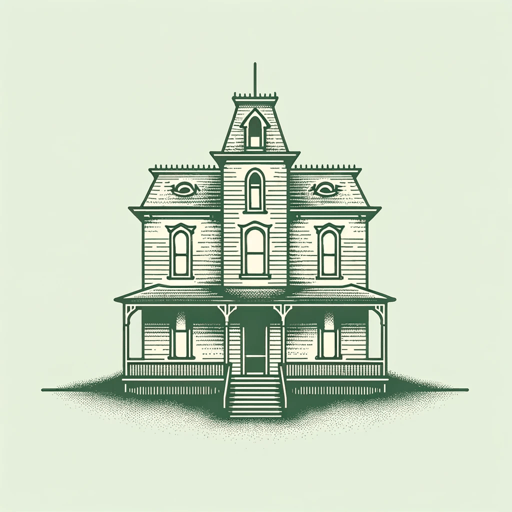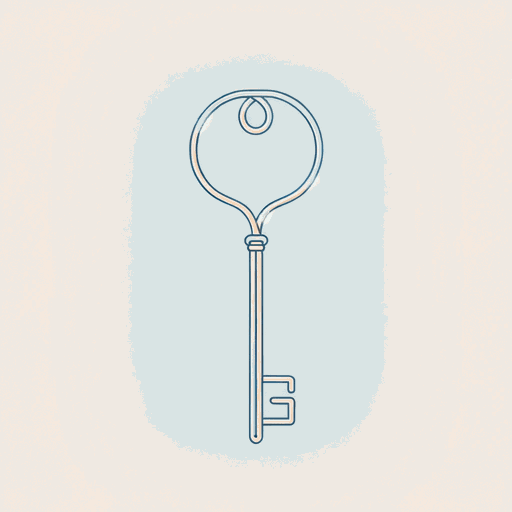49 pages • 1 hour read
Helen OyeyemiWhite Is for Witching
Fiction | Novel | Adult | Published in 2009A modern alternative to SparkNotes and CliffsNotes, SuperSummary offers high-quality Study Guides with detailed chapter summaries and analysis of major themes, characters, and more.
Summary and Study Guide
Overview
White Is for Witching, published in 2009, is Helen Oyeyemi’s third novel, for which she received the Somerset Maugham Award. A finalist for the Shirley Jackson Award, White Is for Witching explores both traditional horror and the horrors of racism. Oyeyemi’s novels often center the experience of historically marginalized groups, which perhaps reflects her own background as a Nigerian-born English citizen who attended Cambridge University. White Is for Witching frames histories of racism as supernatural, casting protagonist Miranda Silver’s struggles with eating and loneliness as the results of ghostly forces. These forces target a house her parents inherit in Dover, situated on the edge of England. Once the family moves to the house, death and destruction occur, with Miranda’s mother dying and Miranda herself disappearing. The house itself helps narrate the novel, as the chapters switch from one narrator to another, moving from past to present and back, signifying the lack of boundaries between the living and the dead in the novel.
This guide is based on the 2009 Riverhead Books edition.
Content Warning: White Is for Witching depicts suicide, self-harm, and disordered eating. It also includes racist and xenophobic content, including offensive terms for Black people and undocumented citizens, which is replicated in this guide only in direct quotation of the source material.
Plot Summary
The Prologue (“Where Is Miranda?”) opens with a series of discordant voices discussing the whereabouts of Miranda Silver. Miranda’s twin brother Eliot, her girlfriend Ore from Cambridge University, and 29 Barton Road, the Silver House in Dover, all examine the life and likely death of Miranda. This prologue anticipates the novel’s switches between narrators, as Eliot, Ore, and the house all report a version of Miranda’s experience with pica and disordered eating, as well as her connections with her mother, grandmother, and great-grandmother. These narrators blur the boundaries between chapters, just as they do the novel’s boundaries between the past and present, and the living and the dead.
The story officially begins with a narration by the Silver House, which describes Luc Dufresne, Miranda and Eliot’s father. Luc meets Lily Silver at a Christmas party and woos her with peach pastries, which he learned to make from his father, a pastry chef in Paris. After Luc and Lily marry, Lily’s grandmother dies and she inherits the Silver House in Dover. After Luc convinces Lily to return, they and their children move to Dover. The Silver House briefly discusses Lily’s death and Luc’s reaction to it.
The novel then focuses on the clash between Luc’s background as a chef-restaurant reviewer and his daughter Miranda’s experiences with pica. The former tries to cope with the latter’s disordered eating by baking elaborate pastries for his son Eliot. Miranda’s pica connects her to the Silver House, as the latter claims she eats plaster. Her consumption of chalk is linked to her grandmother Anna Silver’s consumption of acorns, leaves, and pebbles, an implicit response to the strangeness of the house.
It’s revealed that Miranda spent time in a clinical facility after her mother’s death. After an awkward car ride home from the facility, the narrative explores the reasons why Miranda was sent to an adolescent psychiatric unit, beginning with the morning that Eliot found her unable to speak, with her hair tied around her wrists. In the present, Eliot and Miranda discuss his application to Cambridge, and Miranda decides to apply as well. They revisit childhood memories and Arthurian roleplay when tragedy strikes. Luc and his children discuss the recent news of murder among Kosovan refugees in Dover, the ensuing fear triggering a chain of events at the Silver House. Azwer and Ezma, who help Luc run the family’s bed and breakfast business, lose track of their oldest child Deme—whom they later find in the house’s elevator with a Lego in her mouth. This event, orchestrated by the Silver House, ultimately drives Azwer and Ezma away, as Miranda’s experience with pica worsens. Sade takes Ezma’s place, and the house responds viciously to her arrival.
As the novel progresses, Miranda loses more and more weight. Miranda attempts to reacclimate to her life, and Eliot’s girlfriend Emma breaks up with him after he refuses to cut her hair short. The siblings fight physically and somewhat playfully after, as the tension between them intensifies. Miranda is invited to interview at Cambridge and meets Ore, the adopted daughter of white laborers in England. Ore almost leaves before her interview, but is convinced to stay by Miranda. Both girls are accepted to Cambridge.
Following Miranda’s first meeting with Ore, the novel traces the history of the Silver House and its female residents, from Miranda’s great-grandmother Anna and Anna’s daughter Jennifer to Jennifer’s daughter Lily. The Silver women all experience symptoms of pica, something that binds them across time. The Silver House hints at Anna killing her daughter Jennifer when she tried to leave Dover and Jennifer’s daughter Lily when she tried to leave for an Italian boyfriend. The truth of the Silver House slowly emerges, as the house, full of malevolence and the spirits of the Silver women, punishes any kind of racial or ethnic diversity of guests, workers, or friends.
Outside the house, Tijana, one of Miranda’s schoolmates and the cousin of Agim, a Kosovan refugee who was attacked, threatens Miranda, certain that Agim’s description of his attacker matches her. The resemblance between Agim’s attacker and Miranda becomes clear as the novel progresses, and the Silver House’s malevolence manifests in the spirits and bodies it controls. This supernatural attack becomes more obvious once Miranda attends Cambridge and meets Ore again. While researching the soucouyant of Caribbean folklore, an aged woman whose vampiric spirit leaves her body to attack at night, Ore encounters Miranda. Soon after, the two begin to date.
Miranda continues to lose weight, and Ore starts to lose weight too—which becomes noticeable to Tijana, who attends Cambridge as well. Miranda soon becomes too ill to attend Cambridge, and the Dean and Luc agree to her returning to Dover. As she weakens, the Silver House grows in strength, harassing a Black couple with sickness and holding them hostage at the bed and breakfast. The house only loses control over these guests when it instead possesses an old mannequin that Miranda bought. This animated mannequin forcibly feeds red-and-white apples to Sade, causing her mental distress and demonstrating the house’s commitment to a white, traditional Dover and England.
Ore visits Miranda after the latter’s return home from Cambridge. Eliot finds Ore attractive and, like his twin sister, finds pleasure in kissing her. The idyllic nature of the visit vanishes, however, as the house becomes intent on driving Ore away to “preserve” the “pure” nature of Miranda and the rest of the Silver women. After Ore leaves, Miranda becomes sicker, and Eliot finds the red-and-white apples that the house used to drive away outsiders. Eliot offers a pie to Miranda, and she assumes he used poisoned apples from the house; she throws the pie away, and Eliot retreats to his room. He hears the door slam, and Miranda disappears.
Related Titles
By Helen Oyeyemi
Featured Collections
Appearance Versus Reality
View Collection
European History
View Collection
Family
View Collection
Fantasy
View Collection
Hate & Anger
View Collection
Horror, Thrillers, & Suspense
View Collection
Immigrants & Refugees
View Collection
LGBTQ Literature
View Collection
Magical Realism
View Collection
Memory
View Collection
Mental Illness
View Collection
Sexual Harassment & Violence
View Collection





